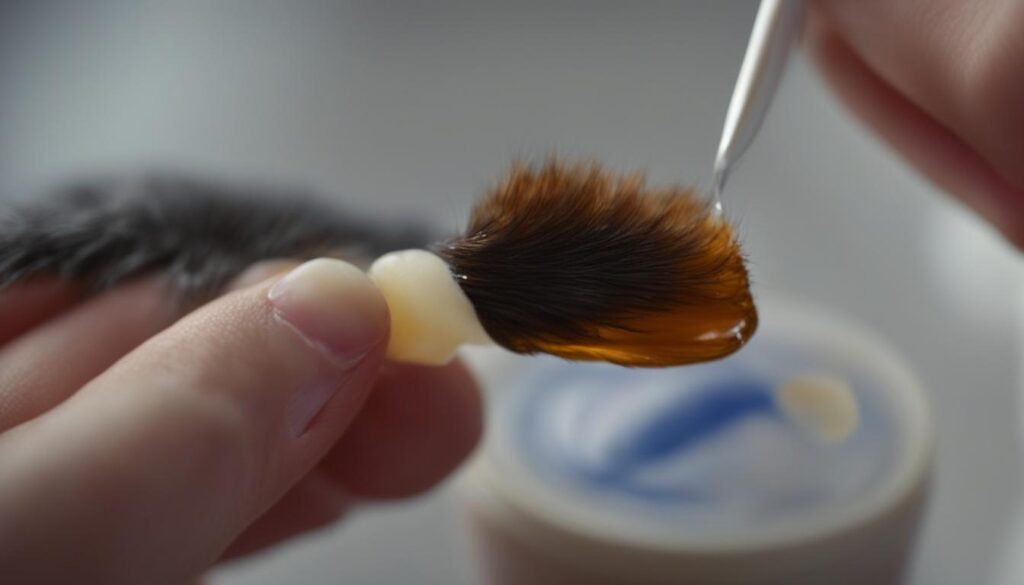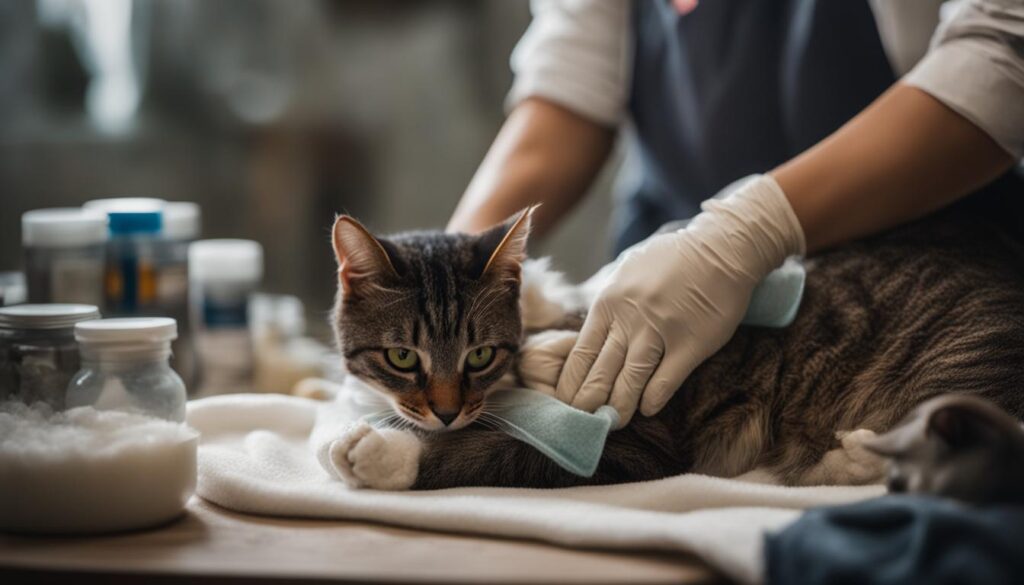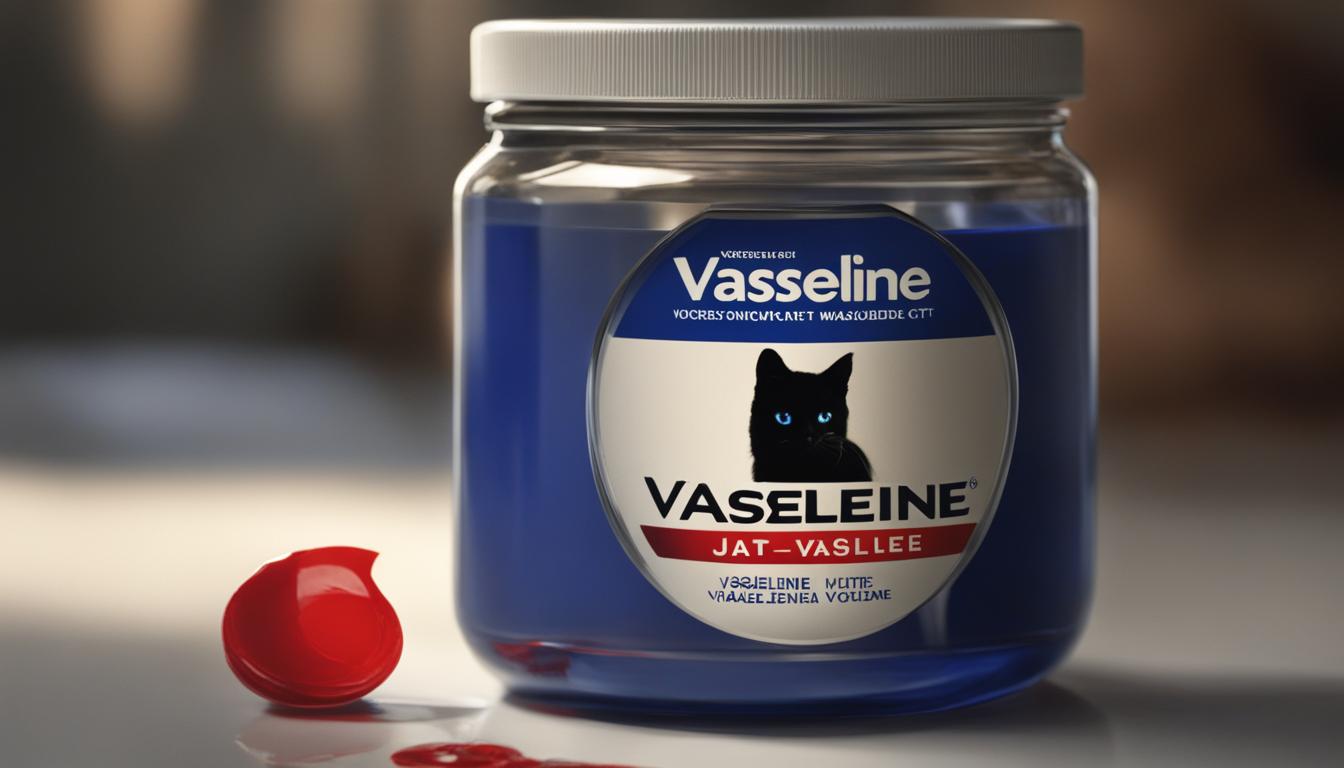Stuck wondering Is Vaseline Safe for Cats Wounds? Keep reading to get expert guidance and veterinary insights on this matter. We'll provide you with comprehensive information on cat wound care, including the use of Vaseline and alternative treatment options.
Key Takeaways:
- Vaseline can be used as a safe treatment for minor cat wounds, but it's important to consider alternatives for more severe or infected wounds.
- Proper wound care and monitoring are crucial for promoting healing and ensuring your cat's well-being.
- Consult with a veterinarian to determine the most suitable treatment option for your cat's wounds.
- If the wound is deep, infected, or causing severe pain or swelling, seek veterinary care.
- Always prioritize your cat's health and consult a professional if you have any concerns.
What is Vaseline?
Vaseline, also known as petroleum jelly, is a versatile product with a wide range of uses. It is a semi-solid jelly-like substance composed of mineral oils and waxes. This colorless and odorless product has a long shelf life, making it a popular choice for various applications.
For humans, Vaseline is commonly used as a moisturizer for dry skin, a lip balm to soothe dry and chapped lips, and a makeup remover to gently dissolve stubborn makeup. It can also be used as an emergency lubricant for squeaky hinges or stuck zippers.
With its composition and properties, Vaseline provides a protective barrier on the skin, helping to retain moisture and prevent drying out. This makes it useful for hydrating and softening the skin, which is why it is favored in many skincare routines.
The Composition of Vaseline:
| Component | Percentage |
|---|---|
| Mineral oils | Between 40% – 95% |
| Microcrystalline waxes | Between 5% – 60% |
Vaseline is a multipurpose product that offers various benefits for humans, ranging from skincare to household uses. Its composition of mineral oils and waxes helps to moisturize and protect the skin, making it a popular choice for many.
The Basics of Cat Wounds
Cats can experience various types of wounds, including scratches, bites, lacerations, and punctures. Understanding the basics of cat wounds is essential for providing appropriate care and ensuring your cat's well-being. It is crucial to recognize the importance of wound healing in cats and be aware of the risks associated with their natural self-grooming instincts.
Types of Cat Wounds:
- Scratches: Superficial wounds caused by sharp claws.
- Bites: Puncture wounds from fights or interactions with other animals.
- Lacerations: Deep cuts that may require medical attention.
- Punctures: Penetrating wounds that can be difficult to detect and may require special care.
Importance of Wound Healing in Cats:
Proper wound healing is crucial for cats' overall health. Untreated wounds can lead to infections, abscesses, and other complications. Cats have a natural instinct to groom themselves, but excessive licking of wounds can introduce bacteria and delay healing. It's essential to provide appropriate wound care to promote healing and prevent potential complications.
Risks of Self-Grooming:
While grooming is a normal behavior for cats, excessive licking or chewing of wounds can disrupt the healing process. Cats' saliva contains bacteria that can cause infections, and their rough tongues can damage the delicate tissue surrounding the wound. Monitoring your cat's grooming habits and taking preventive measures, such as using an Elizabethan collar, can help prevent complications related to self-grooming.
| Types of Cat Wounds | Importance of Wound Healing in Cats | Risks of Self-Grooming |
|---|---|---|
| Scratches | Superficial wounds caused by sharp claws | Proper wound healing is crucial for cats' overall health |
| Bites | Puncture wounds from fights or interactions with other animals | Untreated wounds can lead to infections, abscesses, and other complications |
| Lacerations | Deep cuts that may require medical attention | Excessive licking or chewing of wounds can disrupt the healing process |
| Punctures | Penetrating wounds that can be difficult to detect and may require special care | Cats' saliva contains bacteria that can cause infections |
Is Vaseline Safe for Cats Wounds?


When it comes to treating cat wounds, Vaseline can be a beneficial option due to its unique properties. The benefits of using Vaseline for wound care include its ability to create a barrier that locks in moisture and promotes a favorable healing environment. Its semi-solid texture allows it to adhere to the wound site, providing a protective layer that prevents further damage and keeps the wound clean.
However, it's important to take certain precautions when using Vaseline on cats' wounds. While Vaseline is generally safe for cats to lick in small amounts, some cats may experience mild skin irritation. It's crucial to monitor your cat for any adverse reactions and discontinue use if any signs of discomfort or inflammation occur.
To safely apply Vaseline on cats' wounds, follow these steps:
- Clean the wound: Gently remove any debris or dirt from the wound using a mild antiseptic solution or warm water.
- Pat it dry: Use a clean, soft cloth to dry the wound area by gently patting it. Avoid rubbing, as it can cause further irritation.
- Apply a thin layer of Vaseline: Use a clean finger or cotton swab to apply a thin layer of Vaseline directly to the wound. Be careful not to apply too much, as it may impede the healing process.
- Monitor for adverse reactions: Keep a close eye on your cat's wound and overall behavior. If you notice any signs of increased pain, swelling, redness, or discharge, consult a veterinarian for further guidance.
Remember, while Vaseline can be used for minor cat wounds, it's essential to seek veterinary advice for more severe wounds or those that show signs of infection. Your veterinarian can recommend alternative treatments or prescribe specific ointments or creams tailored to your cat's needs.
| Benefits of Using Vaseline for Wound Care | Potential Precautions | How to Safely Apply Vaseline on Cats' Wounds |
|---|---|---|
| Creates a moisture-locking barrier | Monitor for possible skin irritation | Clean the wound thoroughly |
| Promotes a favorable healing environment | Discontinue use if adverse reactions occur | Pat the wound dry gently |
| Prevents further damage to the wound | Seek veterinary advice for severe wounds or infection | Apply a thin layer of Vaseline |
Using Vaseline for cat wound care can be a helpful solution, but it's crucial to prioritize your cat's well-being and follow the guidance of a veterinarian. By taking the appropriate precautions and closely monitoring your cat's wound, you can promote healing and ensure their speedy recovery.
Alternatives to Vaseline for Wound Care
While Vaseline can be used for certain cat wounds, there are alternative treatments recommended by veterinarians. These treatments may include specific ointments or creams designed for cats, which often contain antibiotics or antifungal agents. Natural remedies such as honey, aloe vera gel, and calendula ointments can also be effective in promoting healing. It's important to consult with a veterinarian to determine the most suitable treatment for your cat's wounds.
Alternatives to Vaseline for Cat Wound Care
| Treatment | Description |
|---|---|
| Cat-Specific Ointments and Creams | These formulations are specifically designed for feline wound care and often contain ingredients that help prevent infection and promote healing. |
| Honey | Honey has natural antibacterial properties and can help prevent infection while promoting wound healing. It should be used in its pure form without any additives. |
| Aloe Vera Gel | Aloe vera gel has soothing and cooling properties, making it a popular choice for wound care. It can help reduce inflammation and promote healing. |
| Calendula Ointments | Calendula ointments, derived from marigold flowers, have antimicrobial and anti-inflammatory properties. They can be beneficial for wound healing and reducing pain. |
Using alternatives to Vaseline for wound care in cats allows for a tailored approach based on the specific needs of your pet. Veterinary-recommended treatments provide targeted healing and often have additional benefits, such as preventing infection or reducing inflammation. Natural remedies can also be effective, especially for minor wounds. However, it's crucial to consult with a veterinarian before trying any new treatment to ensure its safety and effectiveness for your cat's condition.
How to Care for Your Cat's Wound at Home


Caring for your cat's wound at home requires prompt first aid and proper wound management. Follow these essential steps to ensure your furry friend's wound heals effectively:
First Aid for Cat Wounds
When you notice a wound on your cat, it's important to provide immediate first aid. Start by gently restraining your cat to prevent further injury or distress. If the wound is bleeding, apply gentle pressure using a clean cloth or gauze pad to control the bleeding. Avoid using cotton balls as they may leave fibers in the wound.
“Apply gentle pressure using a clean cloth or gauze pad to control the bleeding.”
Cleaning and Dressing Cat Wounds
After controlling the bleeding, it's crucial to clean the wound to reduce the risk of infection. Use a mild antiseptic solution recommended by your veterinarian to gently cleanse the wound. Avoid using hydrogen peroxide or alcohol as they can be harmful to the surrounding tissue.
“Use a mild antiseptic solution recommended by your veterinarian to gently cleanse the wound.”
If the wound is deep or extensive, it may require dressing to protect it from further contamination. Your veterinarian can guide you on the appropriate dressing materials and techniques based on the nature of the wound.
When to Seek Veterinary Care
While many cat wounds can be effectively treated at home, there are situations where professional veterinary care is necessary. If you notice any of the following signs, it's important to seek veterinary attention:
- The wound is deep, large, or heavily bleeding.
- The wound shows signs of infection, such as excessive redness, swelling, pus, or a foul odor.
- Your cat is in severe pain or discomfort.
- Your cat is unable to move or use the affected limb.
“If you notice any signs of infection, excessive redness, swelling, or a foul odor, it's important to seek veterinary attention.”
Remember, proper wound care and monitoring play a vital role in your cat's recovery. By providing timely first aid, thorough cleaning, and appropriate dressing, you can contribute to a successful healing process. However, always consult with your veterinarian for professional advice and guidance tailored to your cat's specific needs.
Conclusion
When it comes to treating minor cat wounds, Vaseline can be a safe option. Its barrier properties help create an ideal healing environment by locking in moisture. However, it's crucial to consider alternative treatments and consult with a veterinarian for more severe or infected wounds.
While Vaseline has its benefits, there are veterinarian-recommended treatments and natural remedies available that may be more suitable for your cat's specific wound. Ointments or creams designed for cats often contain antibiotics or antifungal agents to aid in healing. Natural remedies such as honey, aloe vera gel, and calendula ointments can also be effective.
When caring for your cat's wounds at home, always follow your veterinarian's instructions and monitor the wound for signs of infection or worsening condition. Remember to seek veterinary care if the wound is deep, infected, or causing severe pain or swelling. Prioritizing your cat's health and seeking professional advice when needed will ensure effective wound recovery and your cat's overall well-being.
FAQ
Is Vaseline safe for treating cat wounds?
Yes, Vaseline can be used as a wound treatment for cats due to its barrier properties that help lock in moisture and create an optimal environment for healing.
Can cats lick Vaseline?
Cats can lick small amounts of Vaseline safely, but excessive consumption can lead to digestive issues. Monitor your cat for any adverse reactions.
Are there alternative treatments for cat wounds?
Yes, veterinarians often recommend specific ointments or creams designed for cats, which may contain antibiotics or antifungal agents. Natural remedies like honey, aloe vera gel, and calendula ointments can also be effective.
How should I apply Vaseline to a cat's wound?
Clean and pat the wound dry, then apply a thin layer of Vaseline. Monitor your cat for any skin irritation or adverse reactions.
What should I do if my cat has a deep or infected wound?
Seek veterinary care for deep, infected, or severely painful and swollen wounds. Your veterinarian will provide appropriate treatment.
How do I care for my cat's wound at home?
Control bleeding, clean the wound with mild antiseptics, and dress the wound if necessary. Follow your veterinarian's instructions and monitor for signs of infection or worsening condition.
When should I seek veterinary care for my cat's wound?
Seek veterinary care when the wound is deep, infected, or showing signs of severe pain or swelling. Consulting a professional is always recommended if you have any concerns.





